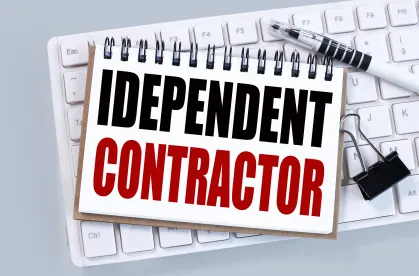On December 13, 2021, the Massachusetts Supreme Judicial Court (“SJC”) issued its long-awaited decision determining that the Massachusetts Independent Contractor Statute, G.L. c. 149, § 148B (“Independent Contractor Statute”), which establishes the three-pronged “ABC” test used to classify workers as independent contractors or employees – and provides for a rebuttable presumption that workers are employees unless the purported employer proves otherwise – is not the applicable standard to determine whether an entity is a joint employer.
Critically, the SJC concluded that the Massachusetts wage laws, which neither define what an “employer” is, nor expressly provide for “joint employers,” do, in fact, include the long-standing concept of joint employment. However, in recognizing that joint employment is an issue to be considered under Massachusetts law, the SJC also held that the applicable test should be the traditional four-factor test applied under the Fair Labor Standards Act (“FLSA”), as opposed to the three-prong employee v. independent contractor test from the Independent Contractor Statute.
By way of background, in Kyana Jinks, et al. v. Credico (USA) LLC., Credico, a client broker for independent direct marketing companies, contracted with DFW to provide sales and marketing services, which included door-to-door and other face-to-face sales services for Credico’s nationally based telecommunications and energy clients. DFW hired the plaintiffs as independent contractors to work on Credico’s marketing campaigns and, in turn, DFW had a subcontractor agreement with Credico that required the Plaintiffs to comply with Credico’s Code of Business Ethics and Conduct. It further provided that DFW retained sole control over the “manner and means” of performing the services. Credico paid DFW based on types of sales, and DFW was responsible for compensating the Plaintiffs. The SJC also noted that the record showed Credico had no involvement in DFW’s policies regarding the compensation DFW paid to its salespersons. Also notable, aside from reporting to the DFW office at the beginning and end of a workday, the plaintiffs completed their sales work “in the field” via face-to-face interactions with consumers, and confirmed that they had never met, communicated with, or seen anyone employed by Credico, and had never been to a Credico office.
Plaintiffs filed a lawsuit alleging that Credico violated the Independent Contractor Statute by misclassifying them as independent contractors and failing to pay minimum wage and overtime, also claiming that the conjunctive three-prong test set forth in the Independent Contractor Statute applies, which says, in pertinent part:
[A]n individual performing any service . . . shall be considered to be an employee . . . unless:
-
the individual is free from control and direction in connection with the performance of the service, both under his contract for the performance of service and in fact; and
-
the service is performed outside the usual course of the business of the employer; and,
-
the individual is customarily engaged in an independently established trade, occupation, profession or business of the same nature as that involved in the service performed.
Plaintiffs proposed that the Independent Contractor Statute’s ABC test should apply because the individuals bringing claims were “performing any service” from which the purported joint employer derives an economic benefit, but the SJC noted that it had rejected that concept in Depianti v. Jan-Pro Franchising Int’l, Inc., 465 Mass. 607, 990 N.E.2d 1054 (2013), holding instead that the entity for whom the individual directly performs services is ordinarily the individual’s employer responsible for compliance with the wage laws.
The SJC also explained that the ABC test asks a question that differs from the question relevant to determining whether an entity is a joint employer, basing the answer on the question who, if anyone, controls the work other than the worker themself, whereas by contrast, the question of joint employment focuses on whether an individual, whose work is controlled by one entity, is also subject to the control of another entity. In other words, “using the independent-contractor test exclusively to answer the joint-employer question would be rather like using a hammer to drive in a screw: it only roughly assists the task because the hammer is designed for a different purpose.”
As a result, the SJC explained that whether an entity is a joint employer under the wage laws, which were modeled after the FLSA, should be determined (as is done under the FLSA) by examining the totality of the circumstances of the parties’ working relationship, guided by a useful framework of four factors following First Circuit precedent: “whether the alleged employer (1) had the power to hire and fire the employees; (2) supervised and controlled employee work schedules or conditions of employment; (3) determined the rate and method of payment; and (4) maintained employment records.” The SJC noted that this is not a mechanical test to blindly be followed, but that this was the general framework to consider.
Based on this test, the Court determined that Credico was not the direct employer of the plaintiffs and thus not liable for misclassification.
Given the Court’s ruling, companies doing business with contractor relationships in Massachusetts should evaluate the four FLSA factors to determine whether they could be considered joint employers along with any entities with which they subcontract. In addition, companies should carefully evaluate their subcontracts to ensure that they place the responsibilities included in the four factors, and any others that could be relevant to a joint employer theory, on the subcontractor entity.





 />i
/>i

